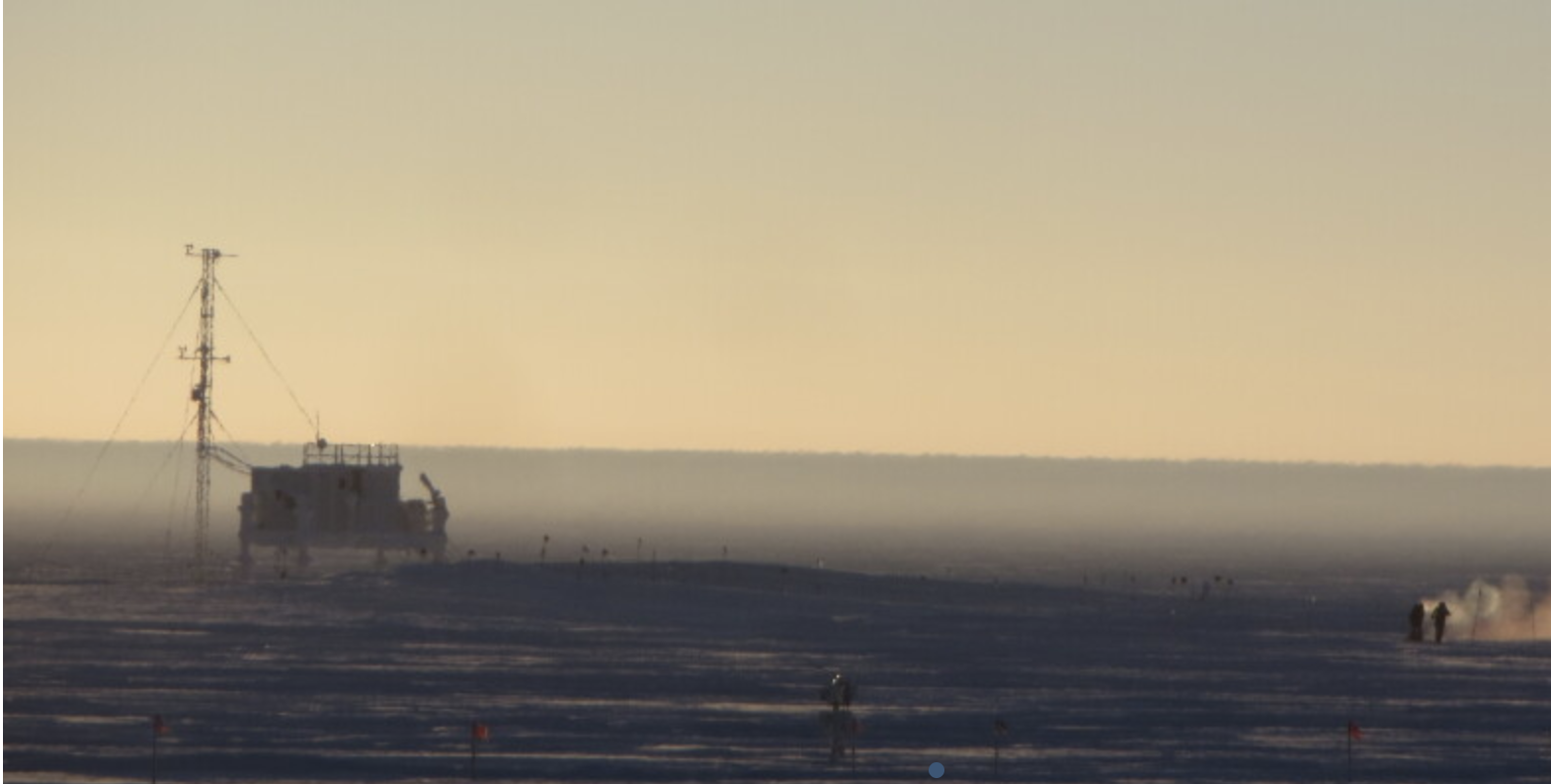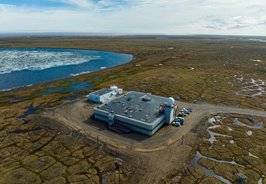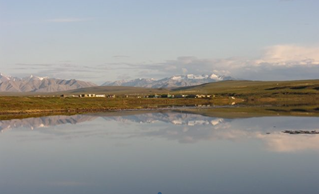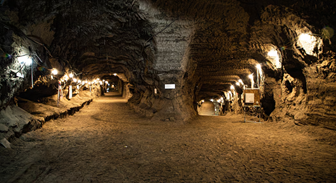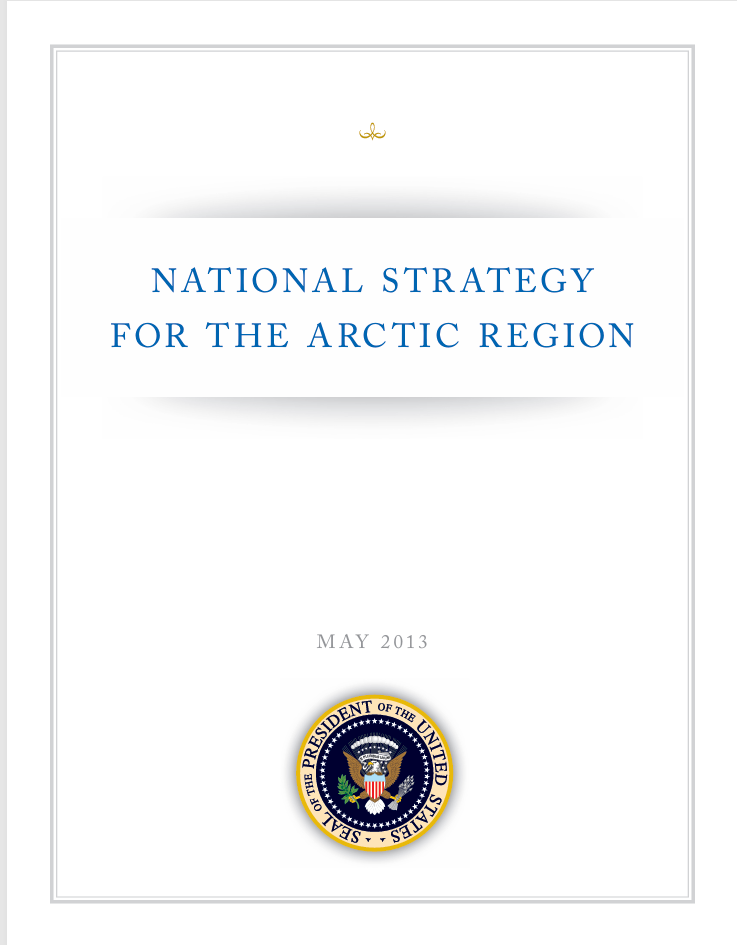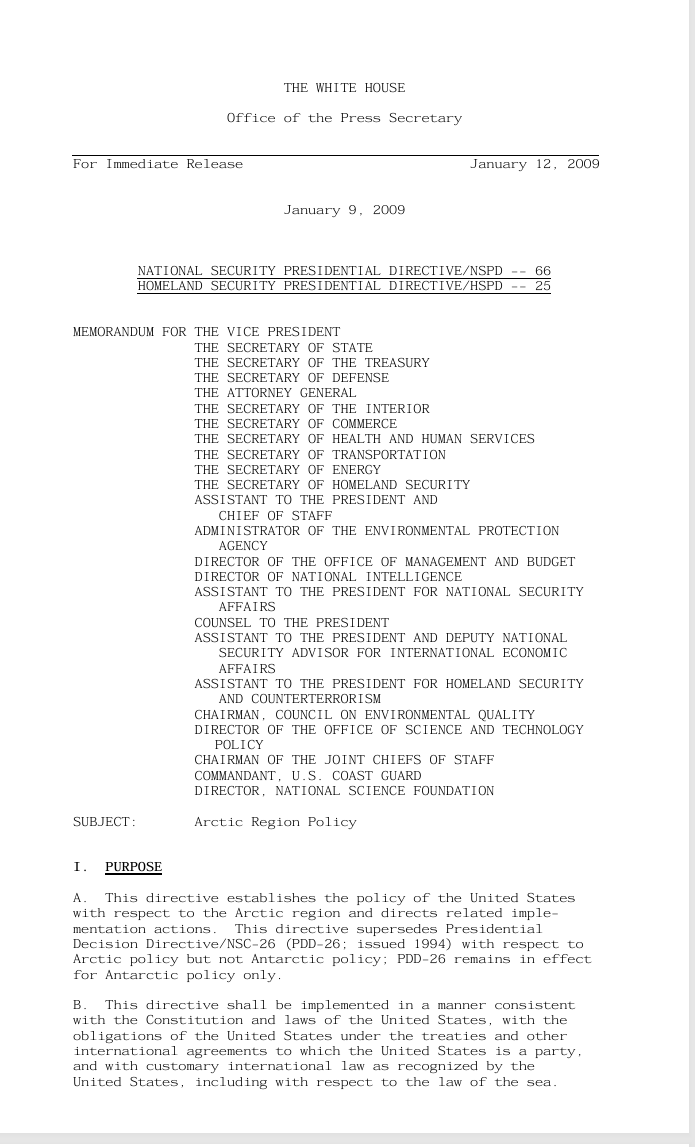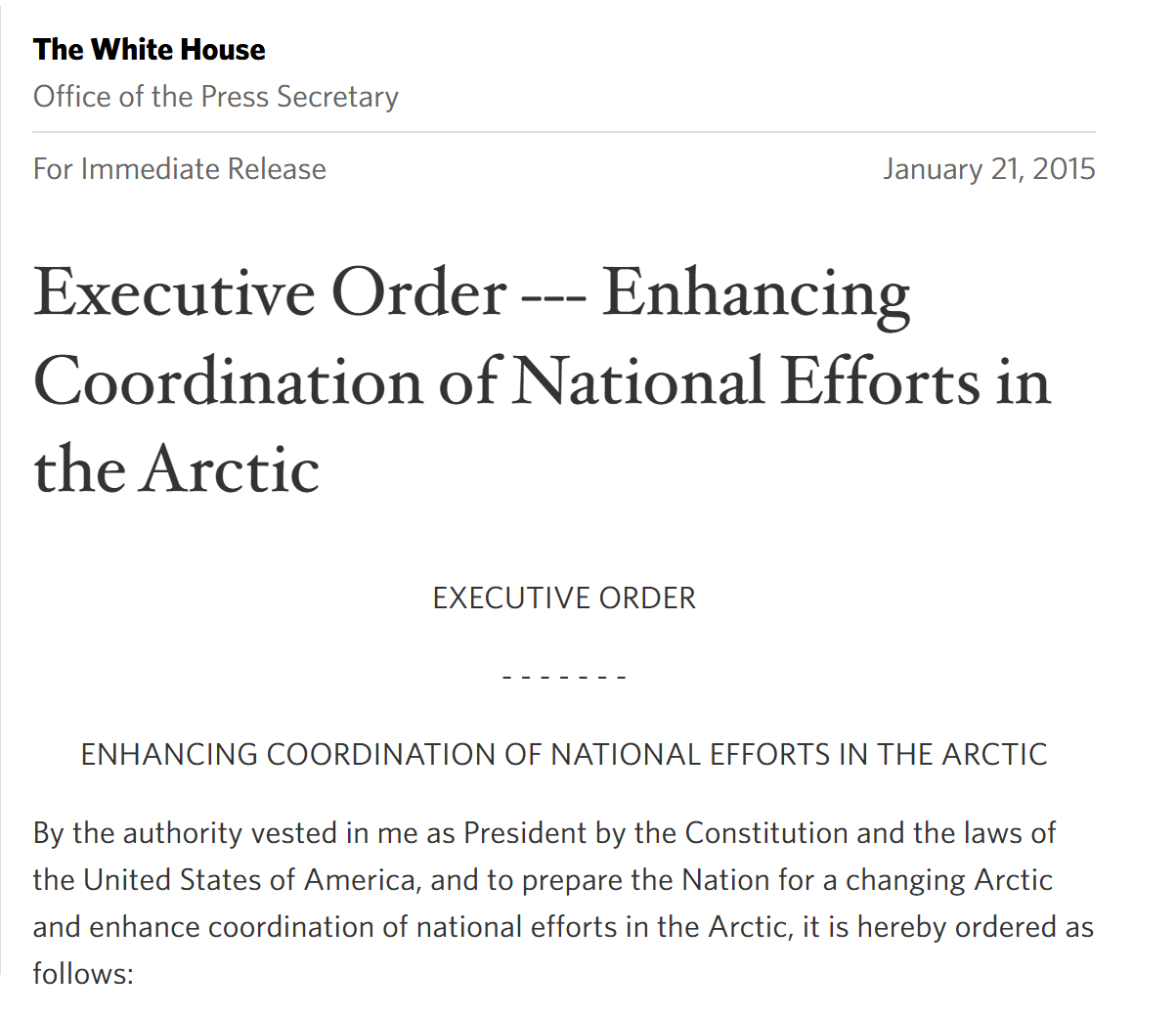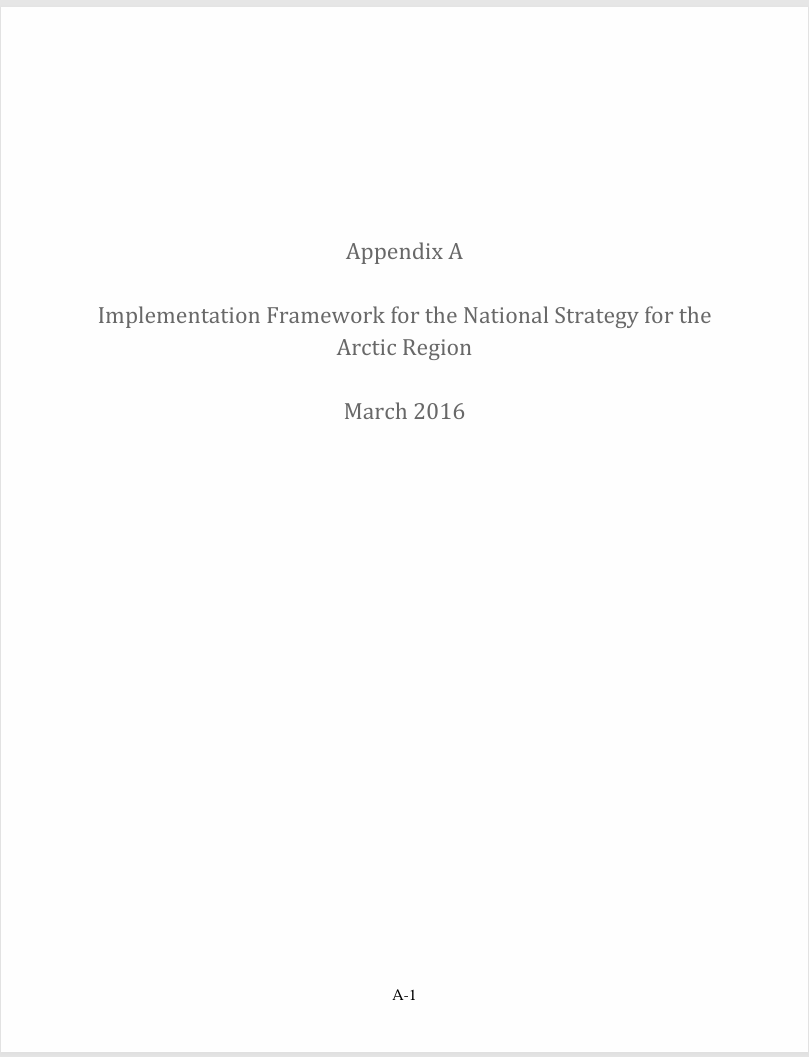The United States operates and supports several research stations and facilities in the Arctic, often in collaboration with academic institutions, federal agencies, and international partners. These research facilities serve as critical hubs for studying climate change, ecosystems, and other Arctic-specific phenomena. Here lists the main U.S. research stations:
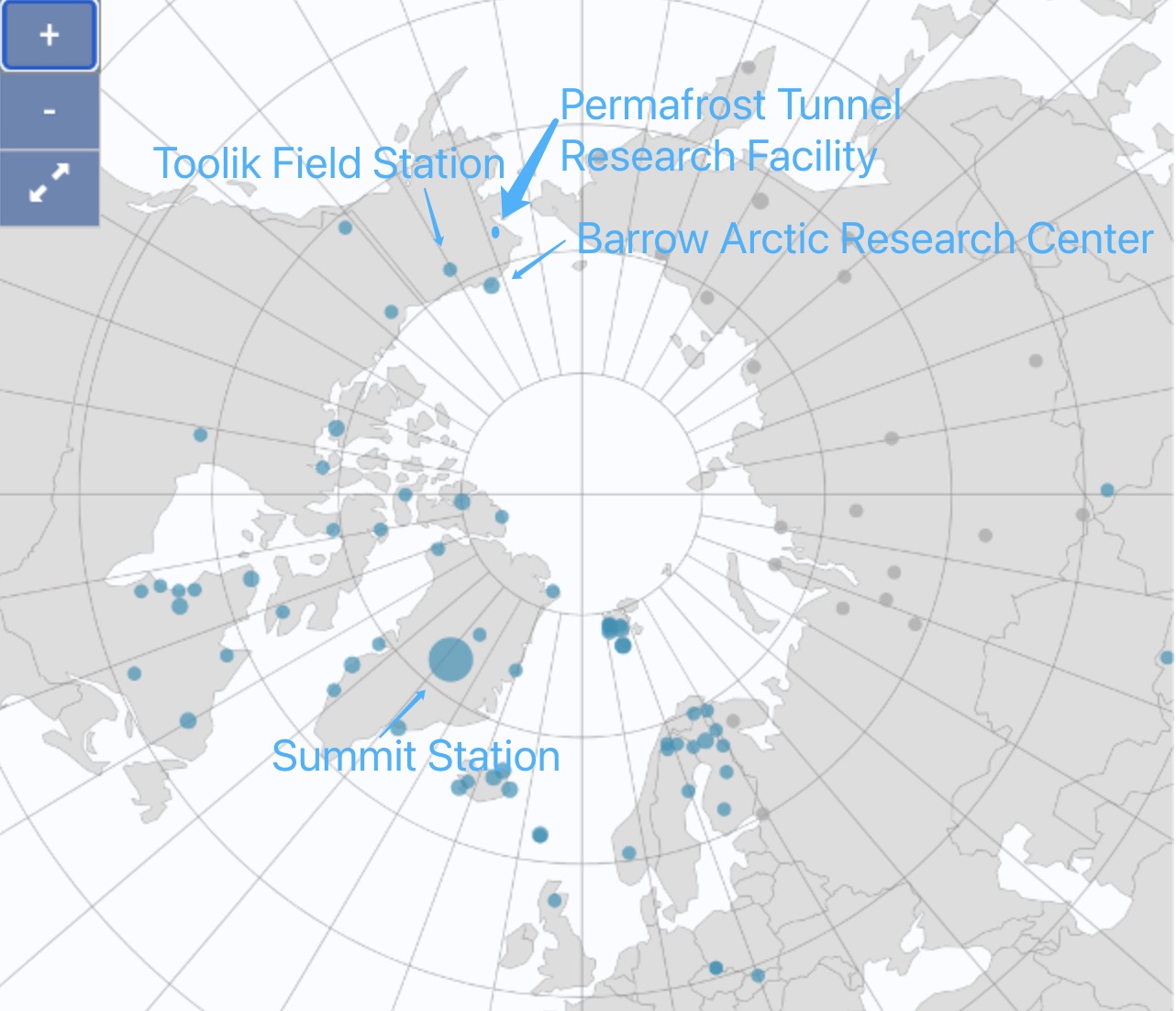
1. Summit Station
Summit Station - INTERACT
Location: Greenland Ice Sheet
Managed By: National Science Foundation (NSF)
Focus: Climate and atmospheric research, ice core studies
Key Features:
- Operates year-round in extreme conditions
- Conducts studies on air quality, snow accumulation, and atmospheric processes
2. Barrow Arctic Research Center
Barrow Arctic Research Center/Environmental Observatory - INTERACT
Location: Utqiaġvik, Alaska (formerly Barrow)
Focus: Climate, permafrost, and atmospheric research
Key Features:
- Part of the U.S. Arctic Observing Network (AON)
- Facilitates research in atmospheric and oceanographic sciences
3. Toolik Field Station
Toolik Field Station - INTERACT
Location: North Slope, Alaska, near the Brooks Range
Managed By: University of Alaska Fairbanks
Focus: Terrestrial and freshwater ecosystems, particularly tundra and lake ecosystems
Key Features:
- A key site for the Long-Term Ecological Research (LTER) network
- Hosts scientists studying changes in Arctic ecology due to climate change
4. Permafrost Tunnel Research Facility
Location: Fox, Alaska (near Fairbanks)
Managed By: U.S. Army Corps of Engineers Cold Regions Research and Engineering Laboratory (CRREL)
Focus: Permafrost and frozen ground studies
Key Features:
- Provides a unique environment for studying frozen ground and ice formations
5. International Arctic Research Center (IARC)
Location: Fairbanks, Alaska
Managed By: University of Alaska Fairbanks
Focus: Arctic climate systems, environmental change, and collaborative international research
Key Features:
- Facilitates interdisciplinary research on Arctic climate change impacts
- Promotes international cooperation among Arctic researchers
- Integrates Indigenous Knowledge with scientific studies to address global climate challenges



